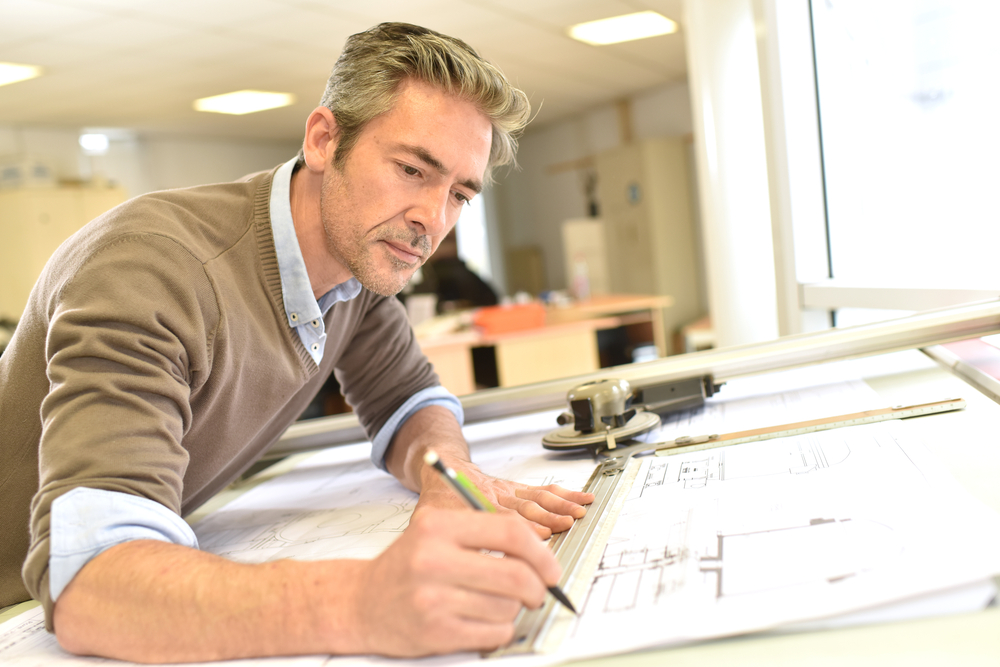Architect Portfolio Samples That Win Over Clients Instantly
Architect Portfolio Samples That Win Over Clients Instantly
Blog Article
Recognizing the Diverse Job Paths Available for Aspiring Architect
As a hopeful Architect, you have a globe of profession courses waiting for you. Whether you're attracted to traditional architecture or the subtleties of sustainable design, there's a specific niche that lines up with your interests.
Standard Style: Designing Structures and structures
Standard design focuses on designing structures and structures that blend capability with aesthetic allure. Your layouts can mirror social heritage, showcasing neighborhood customs while satisfying contemporary requirements.
You'll establish skills in drafting, model-making, and site analysis, allowing you to visualize and connect your ideas successfully. Engaging with customers, you'll require to recognize their vision and equate it into possible designs.
In addition, constructing codes and sustainability techniques are important in your work, guaranteeing your structures are ecologically friendly and risk-free. As you grow in your occupation, you'll locate chances in domestic, commercial, and even restoration tasks, each offering special challenges. Welcoming conventional architecture leads the method for a meeting occupation that pays tribute to the past while shaping the future.
Urban Preparation: Shaping Areas and Public Spaces
As a hopeful Architect, you can play a vital role as a city planner, changing exactly how communities work and interact. By utilizing area interaction strategies, you'll ensure that residents have a voice fit their environment. Plus, incorporating sustainable layout principles will assist create areas that not just fulfill today's requirements however also secure the future.
Role of Urban Planners
While many might think of engineers as the single visionaries behind structures, metropolitan organizers play an important duty in forming the more comprehensive landscape of areas and public rooms. By working together with numerous stakeholders, you'll assist develop parks, transportation systems, and residential areas that promote social communication and accessibility. Your knowledge in spatial design and area characteristics enables you to envision future development while protecting cultural heritage.
Area Interaction Techniques
Effective area involvement techniques are important for city coordinators to ensure that the voices of locals are heard and valued in the preparation process. To cultivate purposeful discussion, you ought to focus on open online forums and workshops where area members can express their concepts and concerns. Usage surveys and social media sites to get to a wider audience, making sure varied point of views are included. Teaming up with regional companies can enhance trust fund and promote deeper links. It is very important to supply clear information about decision-making procedures and proposed tasks, enabling homeowners to feel educated and empowered. By proactively integrating and listening feedback, you'll create rooms that mirror the community's needs, ultimately leading to more sustainable and effective city environments. Accept transparency and continual dialogue for enduring influence.
Lasting Layout Concepts
When making city spaces, including lasting layout concepts is essential for developing settings that grow both environmentally and socially. You should begin by concentrating on power effectiveness, using materials that reduce waste and promote recycling. Consider incorporating eco-friendly areas, like parks and gardens, to boost biodiversity and boost air high quality. Promoting walkability and public transportation can reduce reliance on cars and trucks, cultivating a much healthier neighborhood.
Creating with water conservation in mind is additionally essential-- think of rainfall yards and permeable surface areas to handle stormwater. Including area members throughout the planning procedure assurances that the spaces you develop meet their requirements and encourage social interaction. By embracing these concepts, you'll add to dynamic, lasting urban landscapes that benefit every person.

Landscape Architecture: Creating Lasting Outside Environments
As you discover landscape design, you'll find necessary design concepts that produce functional and attractive outside rooms. Lasting techniques play a vital role in guaranteeing these environments flourish while lessening environmental effect. Plus, you'll locate a range of job chances that allow you to make a real distinction in how people communicate with nature.
Design Concepts in Landscape
Comprehending style concepts in landscape style is necessary for developing lasting exterior settings that integrate with nature. You'll need to ponder aspects like range, proportion, and balance to ensure your designs feel natural and inviting. Furthermore, pay attention to seasonal adjustments, developing with products that complement the surroundings year-round.
Lasting Practices Review
Lasting methods in landscape style not only focus on aesthetic appeals yet additionally prioritize eco-friendly health and resource conservation. You can create areas that promote dirt wellness, such as practicing and utilizing natural products permaculture concepts. Eventually, these techniques assure your check that designs benefit both people and the environment for years to come.
Occupation Opportunities Expedition
With a strong foundation in lasting techniques, landscape design offers a selection of profession paths that allow you to make a purposeful effect on the environment. Urban organizers commonly collaborate with landscape architects to develop green rooms in metropolitan setups, boosting city livability. If you're passionate concerning education, consider ending up being a landscape architecture instructor, motivating future generations.
Sustainable Style: Concentrating on Eco-Friendly Practices
As you explore your career in design, welcoming eco-friendly methods can establish you apart in an affordable field. Lasting layout focuses on producing structures that reduce environmental effect while boosting occupant wellness. By incorporating renewable products, energy-efficient systems, and sustainable building methods, you'll contribute to a greener future.
Beginning by acquiring understanding of eco-friendly certifications like LEED or BREEAM, which can boost your qualifications. Consider just how natural light, ventilation, and thermal performance best site can maximize design. Work together with engineers and ecological consultants to innovate options that lower waste and preserve resources.
Don't fail to remember the relevance of community involvement-- engaging neighborhood stakeholders can motivate layouts that harmonize with the environment. As clients increasingly focus on sustainability, your knowledge in environment-friendly techniques will certainly not just attract jobs however likewise satisfy your enthusiasm for accountable architecture. Accept this vital facet of the career, and enjoy your job flourish.
Historic Preservation: Protecting and Restoring Social Heritage
While you start on your building trip, take into consideration the necessary duty of historic preservation in maintaining our cultural heritage. This field focuses on the security and restoration of considerable buildings, sites, and frameworks that inform the stories of our past. By engaging in historical preservation, you'll aid guard the building tradition that shapes neighborhood identity.
As a historic preservation Architect, you'll evaluate historic relevance and evaluate the condition of structures. You'll function closely with conservationists and chroniclers to ensure authentic repair techniques are used. This career path allows you to blend creative thinking with research study, allowing you to develop options that appreciate initial materials and workmanship.
Your job not only contributes to sustainability by reusing existing structures yet likewise cultivates a sense of satisfaction within areas. Embracing this course will certainly help you end up visit here being a guardian of background, protecting the stories and visual appeals that improve our lives.
Inside Architecture: Enhancing Indoor Spaces
Historical conservation and interior design both share a dedication to enhancing the developed atmosphere, however they concentrate on different elements. While historical conservation stresses keeping a structure's cultural and historic worth, interior design absolutely nos in on optimizing indoor spaces for performance and aesthetics.
As an aspiring Architect, you'll find that interior architecture enables you to blend imagination with technological abilities. You'll make rooms that not just look excellent yet additionally promote comfort and effectiveness. This field involves comprehending how light, color, and materials interact within a space, impacting mood and functionality.
You'll work on numerous projects, from domestic homes to commercial offices, guaranteeing that each atmosphere fulfills the demands of its owners. By focusing on customer experience, you can change interiors into motivating and practical spaces, making a significant influence on exactly how people communicate with their surroundings. Welcome the possibility to improve indoor atmospheres and shape the means individuals work and live.
Industrial Design: Merging Capability With Aesthetic Appeals
Industrial layout plays an essential role in developing products that seamlessly mix aesthetics with functionality, guaranteeing that what you use daily is not just visually enticing but also sensible. As a hopeful Architect, you can engage yourself in this area, focusing on making whatever from furnishings to customer electronics. Your job includes comprehending user demands, materials, and manufacturing processes, allowing you to produce innovative options that enhance daily experiences.
In industrial design, you'll commonly collaborate with engineers, marketing professionals, and makers, ensuring that your layouts are not just lovely however likewise possible. This career path supplies a dynamic environment where imagination satisfies usefulness, making it a fulfilling option for architects interested in forming the items of tomorrow.
Often Asked Questions
What Educational Certifications Do I Required to Become an Architect?
To become a designer, you'll need an expert level in style, typically a Bachelor's or Master's. In addition, you'll have to complete an internship and pass the Architect Enrollment Evaluation to exercise lawfully.
Are There Qualification Demands for Different Building Profession Paths?
Yes, there're qualification demands for various building paths. Architect. You'll require to pass exams, full internships, and occasionally pursue specialized training, depending upon your chosen emphasis, like landscape architecture, metropolitan layout, or historic conservation
What Software Program Skills Are Necessary for Architects Today?

How Can I Gain Practical Experience While Researching Design?
You can gain useful experience by interning at architectural companies, taking part in design competitors, volunteering for neighborhood projects, or working together with classmates on real-world tasks. These opportunities improve your skills and develop valuable links in the industry.
What Task Opportunities Exist Outdoors Conventional Style Firms?
You can explore numerous work opportunities outside typical architecture firms, like city preparation, interior decoration, landscape architecture, building and construction management, property growth, and even roles in sustainability consulting. Each deals one-of-a-kind challenges and benefits.
Whether you're attracted to traditional architecture or the subtleties of sustainable design, there's a niche that lines up with your interests.When making city areas, integrating sustainable design principles is crucial for producing settings that grow both ecologically and socially.As you explore landscape design, you'll discover vital style concepts that develop gorgeous and functional outside areas.Recognizing layout concepts in landscape style is crucial for producing sustainable outside settings that integrate with nature.In commercial style, you'll commonly collaborate with suppliers, marketing experts, and designers, making sure that your styles are not only gorgeous yet likewise possible.
Report this page